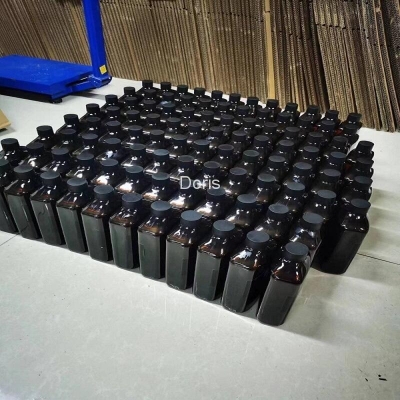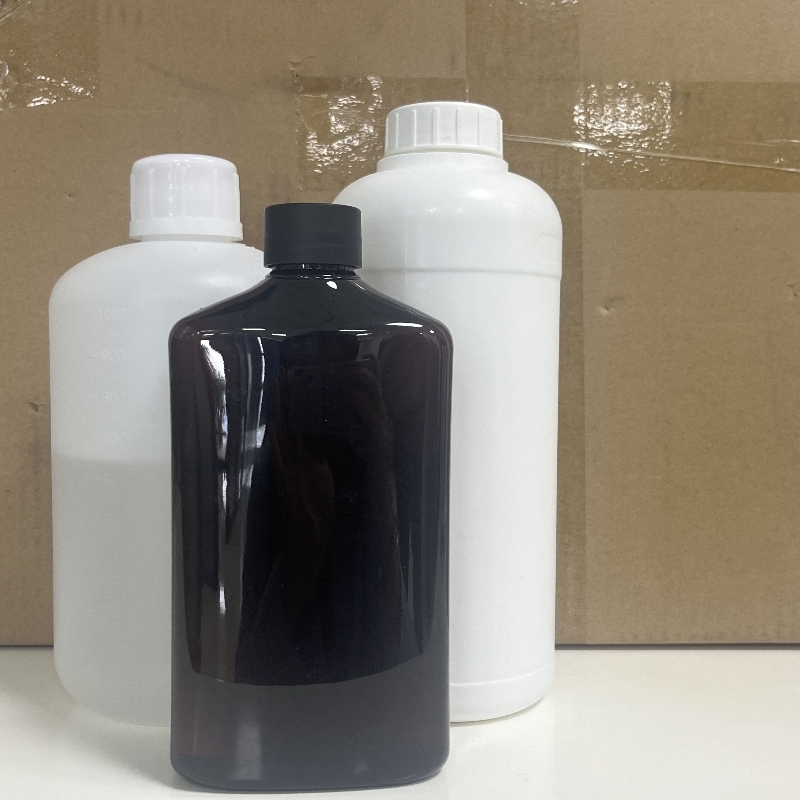-
Categories
-
Pharmaceutical Intermediates
-
Active Pharmaceutical Ingredients
-
Food Additives
- Industrial Coatings
- Agrochemicals
- Dyes and Pigments
- Surfactant
- Flavors and Fragrances
- Chemical Reagents
- Catalyst and Auxiliary
- Natural Products
- Inorganic Chemistry
-
Organic Chemistry
-
Biochemical Engineering
- Analytical Chemistry
- Cosmetic Ingredient
-
Pharmaceutical Intermediates
Promotion
ECHEMI Mall
Wholesale
Weekly Price
Exhibition
News
-
Trade Service
The Department of Health Insurance has made it clear that bio-similar drug belt purchases will be conducted in due course.
biosynthic drugs can replace the original biological drugs in China's clinical market, the main core in three aspects, one is health insurance payment, two is hospital coverage, three is doctor's prescription.
but for companies, the key to winning is price.
01. Biosimilars are managed by collection of "generic drugs"? On October 9, 2020, the National Health Insurance Administration's response to recommendation No. 6450 of the Third Session of the 13th National People's Congress mentioned that "our Bureau is studying the policy of centralized procurement of biological products, biosypolytes are not a restricted area for centralized procurement, and will carry out centralized procurement in due course on the basis of factors such as the similarity of biosicive drugs, the stability of enterprise capacity and supply chain, and the clinical alternativeness of specific products". The
response also mentioned that, in accordance with the Notice on the Inclusion of Negotiated Drugs in Category B for 2019, "if any generic named drug (generic) from other production enterprises is automatically listed within the scope of the catalogue within the validity period, the health insurance department has the right to adjust the standard of payment for health insurance according to the price of generic drugs, and also has the right to include the generic drug in the scope of centralized procurement."
such as Symele (Adamo monoanti) generics have been included in the coverage of health insurance payments."
means that biosimilars are also considered "generic" management.
As early as March 2017, the National Pharmacopoeia Commission issued a notice on the "Principles of General Name Naming Principles for Biological Products" to regulate the common name method of biological products, biosynthic drug naming and original research is no different, for biological products can replace the original drug from the generic name to lay the foundation.
China's policy support for biosynthic drugs was slightly "late" until December 2017, when the National Development and Reform Commission (NDRC) issued a notice of the Three-Year Action Plan to Enhance the Core Competitiveness of Manufacturing (2018-2020), when it became clear that the first biosynthic drug was a high-end drug.
to encourage the expiration of patents with high market potential and high clinical value, and to develop and industrialization of the first biosynthic drug.
the targets of biosynthic drugs under study in China include CD20, EFGR, VEGF, TNF, RANKL and HER2.
relates to nearly 50 primary research drugs, including Adamo monoanti, beval bead monoanti, lytosi single resistance, Inasip, Invlixi monoanti, deschu monoanti, non-Gestin, Pefigstin, Leizhu monoanti, Ottoju monoanti, etc.
since 2015, when the General Administration of Food and Drug Administration issued the Technical Guidelines for the Development and Evaluation of Biosynthic Drugs (Trial), a series of guidelines for the design of clinical trials of biosynthic drugs for specific products have been issued since 2019.
guidelines for the design of clinical trials of biosynthic drugs are aimed primarily at the market standards for biosynthic drugs.
guidelines have been issued for the approval of biosynthic drugs, bio-similar drugs are likely to be approved.
02. Since 2019, four biosypolitic drugs have been approved for two biosychable drugs, namely lytoxides, Adamo monoantigen injections, qurto-pearl mono-injections and beva-bead mono-injections.
2019 has been transferred to the Medicare general list.
Adamu monoantigen injections, tricousto-bead mono-injections and beval-beaded monoantigen injections are all on the list of successful drugs negotiated in 2019, meaning that all three generic biosypotonic drugs are covered by Medicare payments.
Fuhong Hanxuan and Thynda Pharmaceuticals each have two biosynthic drugs approved, is currently the largest number of approved bio-similar drugs manufacturers.
Adamu single anti-injection (commodity name: Shumeile) and Beval pearl single anti-injection (commodity name: aviva) biosynthic drugs and the number of original research manufacturers have reached the threshold of centralized procurement - three, theoretically can be centralized procurement.
single-resistance products entering the health care negotiation catalogue in 2019 are Compaxip, Abersip, Sittoxi single-resistance, beva-bead mono-resistance, nito-pearl mono-resistance, curto-pearl mono-resistance, pato-pearl mono-resistance, and cyndili mono-resistance. , Adami single resistance, Invlisi single resistance, Amaju single resistance, Leizhu single resistance, in addition to Compaxip, Sitoxy single resistance, Xindili single resistance and Adami single resistance have announced negotiated prices, the rest of the products are not announced negotiated prices.
health care negotiations after the success of the health care negotiations because the price has been clear, usually in the procurement platform online procurement, bio-similar drugs after the market is also listed online procurement.
but not all biosypolytes can be successfully purchased online.
Taking Hubei as an example, "The Results of Drug Purchase Access in Hubei Province (Sixth Batch)" has only one biosypolytic drug, with a price of 1,198 yuan for Qilu's Beval Pearl Single Anti-Injection, and Qilu's listing price in other provinces in 2019 is 1,266 yuan.
"Hubei Province drug procurement access publicity form (seventh batch)" mentioned Xinda into the network procurement, but did not publish the price of Thyda Baiotai's Adamo single anti-injection in Tianjin quoted 1160 yuan, in "Hubei Province drug procurement access results (sixth batch)" did not successfully hang up the network, "Hubei Province drug procurement access publicity form (seventh batch)" price of 1150 yuan, is expected to be successfully hung.
the industry believes that the most likely category to be concentrated in the short term is insulin-type biological products.
January 9, 2020, 10 insulin manufacturers, including No. 1 and Nord, Lilly, Tonghua Dongbao, and Federal Pharmaceuticals, participated in a tender for volume procurement in Wuhan, the first time that insulin has been included in the centralized procurement category.
the time of the insulin is divided into 7 groups for bargaining, only No. and Nord, Jiangsu Lilly and Tonghua Dongbao, Hefei Tianmai shortlisted.
market is expected to be mainly divided between No. and Nord, Lilly and Tonghua Dongbao.
wuhan model is very likely to be used as a pilot model by the whole country for reference.
03. What are the difficulties in centralized procurement of biosynthic drugs? Whether biosynthic drugs can replace the original research products, the Health Insurance Bureau has made it clear that the similarity of biosynthic drugs, the stability of enterprise production capacity and supply chain, clinical substitution of specific products and other factors should be considered, and will carry out centralized volume procurement in due course.
In August 2020, CDE issued the Guidelines for Public Consultation on Biosyspole Drug Similarity Evaluation and Adaptation Extratroller (Draft for Comments), which refers to "similarity" as referring to the high degree of similarity between biosyspoles and reference drugs, with no clinically significant differences in purity, safety and effectiveness.
The overall similarity evaluation needs to be based on pharmaceutical, non-clinical and clinical evaluation of the trial results, such as the candidate drug and reference drug small quality differences did not find an impact on safety, effective and immunogenicity, it can be considered that the candidate drug and reference drug as a whole similar.
these studies are basically required at the time of registration and filing, so they are largely replaceable in terms of similarity.
The main concern about the interchangeability of clinical use of biosynthetic drugs comes from safety: many stakeholders believe that the exchange of biosynthetic drugs may increase different immunogenic and adverse reactions, affecting the safety of patients.
same time, there is growing evidence that adverse reactions to biosynthetic drugs are due to differences in drug formulations and inappropriate storage and transport conditions, and that drug-to-drug interchanges do not increase immunogenic responses.
the EUROPEAN Union also pointed out in the guidelines that 10 years of clinical evidence showed that EMA-approved biosynthic drugs could be used safely and effectively as other biological agents in all their approved adaptation certificates.
, the International Association of Generic Drugs called for streamlining the global biosimilar development and approval process.
, the above-mentioned studies on the certification of "similarity", in particular the reference to clinical efficacy requirements, are of limited value in the overall regulatory evaluation and decision-making process of biosynthic drugs.
retrospective study cited in the filing showed that all biosypositive drug development programs approved by the European Union and the United States had a proof-of-efficacy study of the efficacy of the results.
that in 95% of biosypolyte development programs, compared to efficacy studies did not add any scientific value to the review process.
in the remaining 5% of the program, a ratio of efficacy was established, but there were differences in immunogenicity rates and the production process needed to be improved prior to approval.
importantly, these results were observed in biosynthesis drugs developed prior to 2010 and no differences in clinical efficacy and safety, including immunogenicity, have been observed in biosynthesis drug development programmes since then.
although comparative clinical efficacy studies are of limited value in regulatory decision-making, "regulators rarely waive the need for these studies."
" interchangeable between drugs means replacing one drug with another that is expected to have the same clinical effect, which means that the original drug can be replaced with a biosynthic drug (and vice versa) or another biosynthic drug with a biosypolytic drug.
Interchangeable biosynthics include the following attributes: 1) biosynthics are similar to those of the original biopharmaceers;
4) Interchangeable biosynthic drugs can be exchanged with the original drug without the intervention of a doctor.
the United States believes that the interchangeability of biosimilars may require complementary trials: whether two or more substitutions between biosimilars and primary biopharmaceuticals affect the safety or efficacy of the treatment process.
how clinical trials are designed, whether real-world data research can be supported, is still being explored.
Biosynthic drugs to be marketed to do the 3rd phase of clinical research costs are very high, if you still need to do interchangeability tests to demonstrate feasibility, is undoubtedly for the use of biosynthic drugs plus a threshold, this threshold is mainly good for the original research manufacturers.
are interchangeable, there are usually two forms of conversion and substitution in clinical use. the
conversion form refers to the decision of the prescriber to replace another drug with one drug with the same therapeutic purpose, and also includes objective reasons such as centralized procurement policy or clinical supply, which constitutes a management restriction on the clinician's prescription freedom, thus thereby occurring.
centralized procurement of biosynthic drugs if included in the list, which means that biosynthic drugs are expected to be completed from clinical supply and the conversion of the original study.
Substitution refers to the substitution between primary and biosimilar drugs when distributing biological products of the generic name at the pharmacy terminal without consulting a prescription physician, and automatic substitution is common in chemical generics, but biologically similar drugs, due to their particularity, are not currently recognized by the drug guidelines.
04. Will the price war come? Whether biosynthic drugs can replace the original biological drugs in China's clinical market, the main core in three aspects, one is medical insurance payment, the other is hospital coverage, the third is doctor prescription.
The response of the State Administration of Medical Security to recommendation No. 6450 of the Third Session of the 13th National People's Congress makes it clear that in the list of medical insurances determined by the generic name and the corresponding standards for payment of medical insurance drugs, biosypolysed drugs and the original research drugs belong to the same generic name and can theoretically be replaced with each other.
biological products, especially biosynthic drugs, can be purchased centrally, biosynthic drugs can replace the original research drugs in the medical institutions of the winning province. on
Doctor's Prescriptions, on May 15, 2020, the China Biosynthic Drug Expert Consensus Conference, sponsored by the China Society of Clinical Oncology (CSCO) China Anti-Lymphoma Alliance, was successfully held, with Professor Zhu Jun of Peking University Cancer Hospital, Professor Shen Zhixiang of Ruijin Hospital affiliated with Shanghai Jiaozhou University, Professor Ma Jun, Director of Harbin Institute of Hematology Oncology, and Professor Shi Yuankai of the Chinese Academy of Medical Sciences as the chair of the conference.
the first "China Biosynthic Drug Expert Consensus" was officially released at the conference.
from a consensus point of view, it is mainly up to prescription doctors to determine whether patients can convert biosynthetic drugs, due to the lack of experience in the use of biosynthetic drugs, it is expected that the early stage is still personalized drug treatment."
, whether from the health insurance policy or centralized procurement, clinical drug guidelines, for biosic drugs in the clinical replacement of the original drug to provide a basis.
with the approval of bio-similar drugs in China, the price war of bio-similar drugs is not far away.







